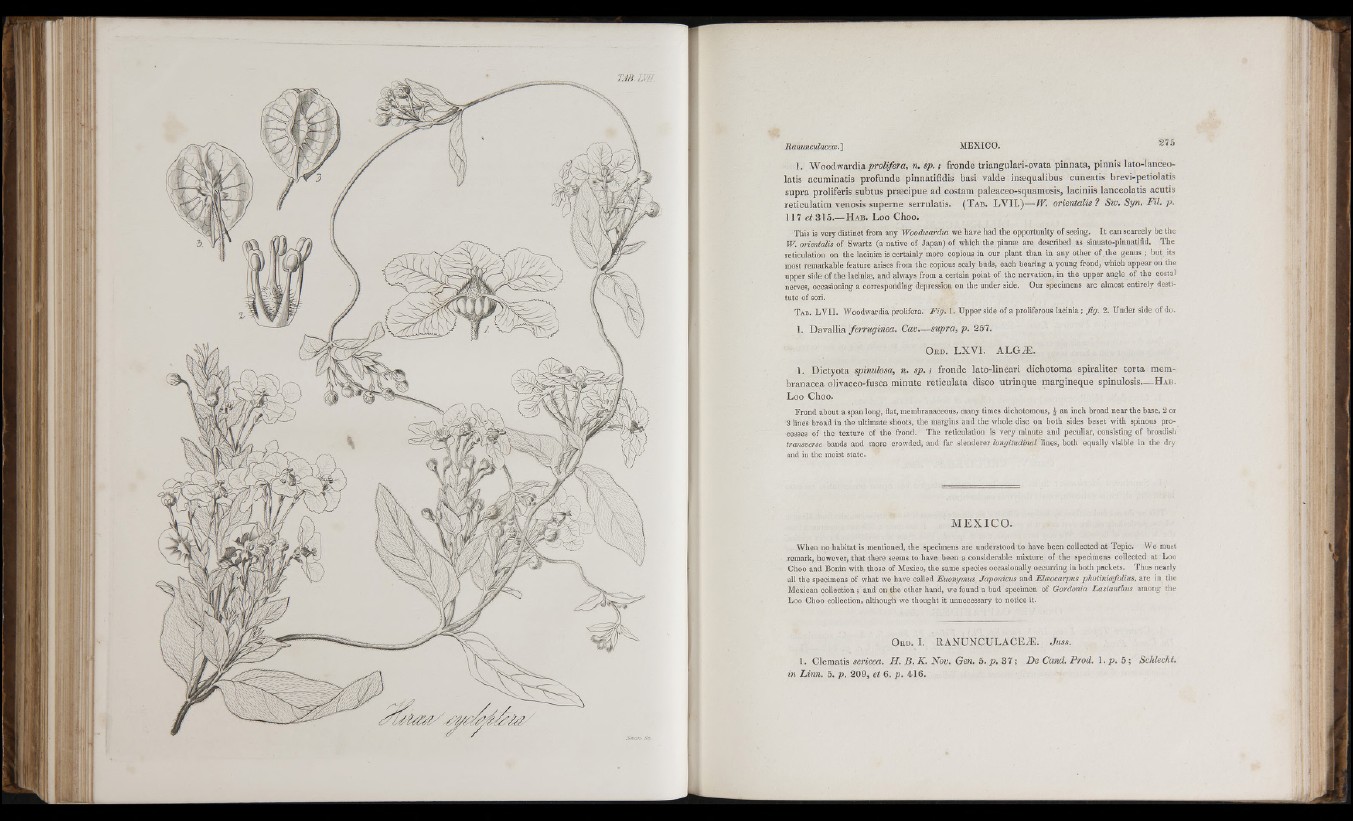
l i
i': .
^ 1 I r:' j
l'ft liJi!
i.ì
T .m m i .
1. W o o dw a rd ia /Jro/î/ira, n. sp. ; fronde triangulari-ovata p innata, pinnis lato-lanceolatis
acuminatis profunde pinnatifidis basi valde inæqualibus cuneatis brevi-petiolatis
su p ra proliferis subtus præcipue ad costam paleaceo-squamosis, laciniis lanceolatis acutis
reticulatim venosis su p ern e serrulatis. (T a b . L V I I .)— W. orientalis? Sw. Stjn. Fil. p.
117 et 315.— H a b . L oo Choo.
This is very distinct from any Woodwardia we have had the opportunity of seeing. It can scarcely be the
W. orientalis of Swartz (a native of Japan) of which the pinnæ are described as sinuato-pinnatifid. Tbe
reticulation on the laciniæ is certainly more copious in our plant than in any other of the genus ; but its
most remarkable feature arises from the copious scaly buds, each bearing a young frond, which appear on the
upper side of the laciniæ, and always from a certain point of the nervation, in the upper angle of the costal
nerves, occasioning a corresponding depression on the under side. Our specimens are almost entirely destitute
of sori.
Tab. LV II. Woodwardia proliféra. F ig . I. Upper side of a proliferous lacinia ; fig . 2. Under side of do.
1. DavaWia ferruginea. Cav— supra, p . 257.
O r d . L X V I . A L G Æ .
1. Dictyota spinulosa, n. sp. ; fronde lato-IinearL dichotoma sp iraliter to rta memb
ranacea olivaceo-fusca minute reticulata disco u trin q u e margineque spinulosis.— H a b .
Loo Choo.
Frond about a span long, flat, membranaceous, many times dichotomous, ^ an inch broad near the base, 2 or
S lines broad in the ultimate shoots, the margins and the whole disc on both sides beset with spinous processes
of the texture of the frond. The reticulation is very minute and peculiar, consisting of broadish
transverse bands aud more crowded, and far slenderer longitudinal lines, both equally visible in the dry
and in the moist stale.
: .
MEXICO.
When no habitat is mentioned, the specimens are understood to have been collected at Tepic. We must
remark, however, that there seems to have been a considerable mixture of the specimens collected at Loo
Choo and Bonin with those of Mexico, the same species occasionally occurring in both packets. Thus nearly
all the specimens of what we have called Euonymus Japonicus and Elæocarpus photiniæfolius, are in the
Mexican collection ; and on tho other hand, we found a bad specimen of Gordonia Lasianthus among the
Loo Choo collection, although we thought it unnecessary to notice it.
O r d . I. R A N U N C U L A C E iE . Juss.
1. Clematis sericea. H . B . K. Nov. Gen. 5. p . 37 ; De Cand. Prod. I. p . 5 ; Schlecht,
in L in n . 5. p . 209, et 6. p . 416.